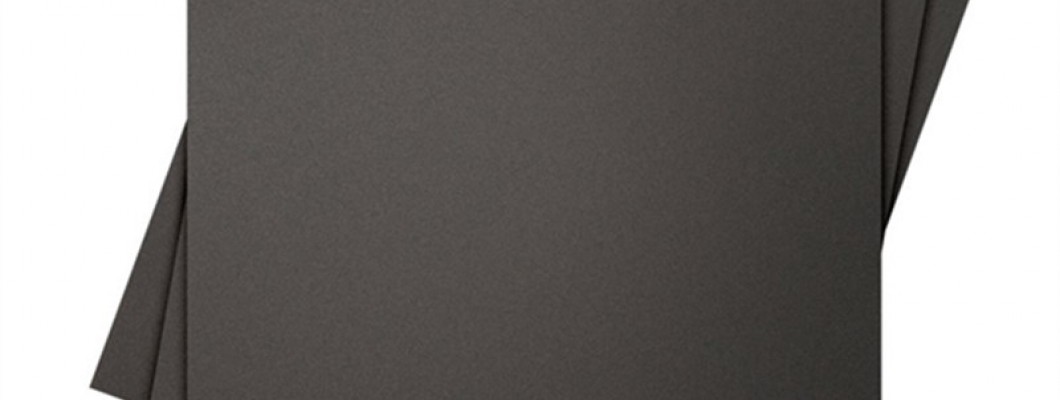
Heated Bed and Printing Surface
The heated bed and the printing surface is a very important part of our 3D printer. It is where the printed part is printed or manufactured, so a good choice will make our lives easier in our experience with 3D printing, avoiding problems such as warping.
As 3D printers evolve new electronic and mechanical components are being used, and the same is happening with printing surfaces.
First we must distinguish the bed from the printing bases:
The bed of the 3D printer is part of its structure, it is a flat surface with an integrated resistance which is responsible for generating heat so that the pieces can adhere more easily. The printing surface is the surface on which the filament will be deposited. Some beds can be used as a printing surface.
Tipos de Cama Caliente:
PCB:
Printed circuit board, have been the most used for a long time.
As advantages, the MK2b are very light and economical, they can be found manufactured in different sizes and generally they can be used at 12V or 24V.
However, they are not as rigid or flat as aluminum and cannot be printed directly on them, so they need a glass or mirror to print on them that also gives them rigidity and flatness.
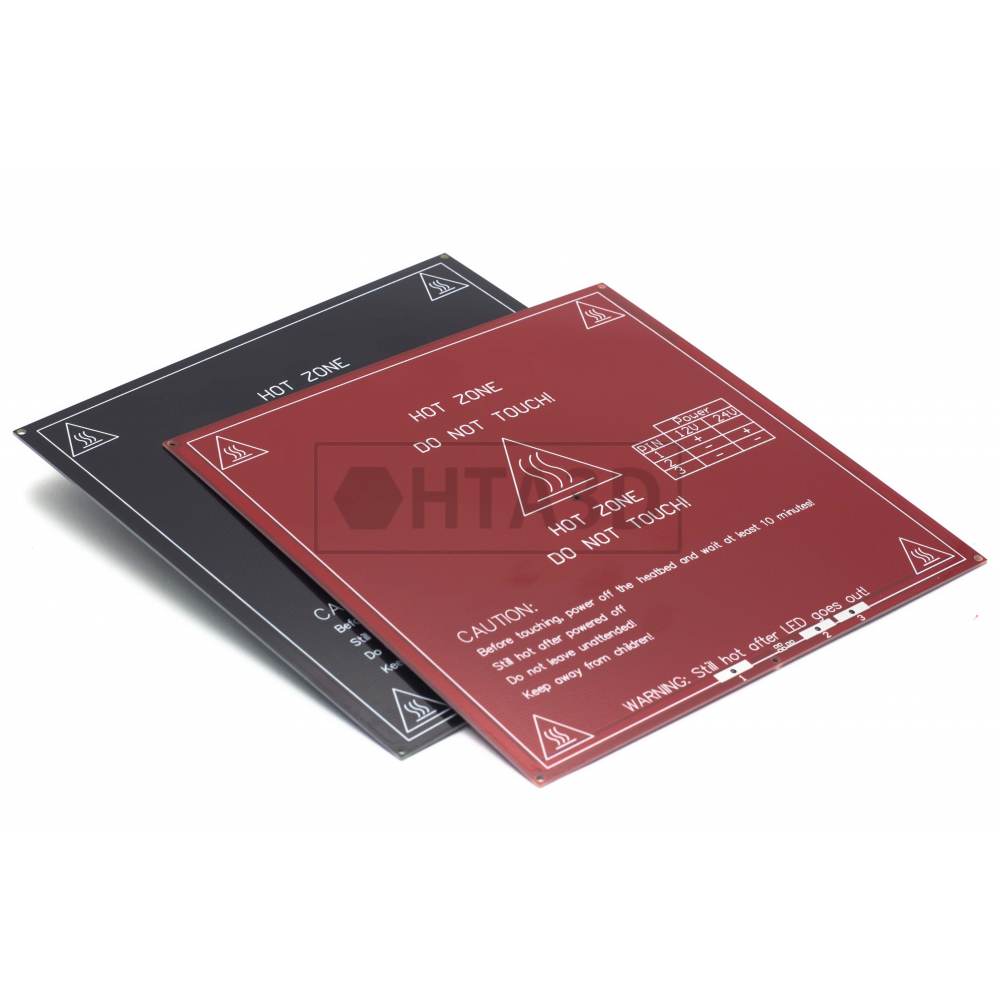
Aluminum:
They stand out for their rigidity and flatness. Also, the aluminum heats up more evenly. The aluminum MK3 bed dissipates heat very evenly, one of the reasons why it began to be used over the MK2b.
The PCB circuit is at the bottom of the heated bed. There are different size options, and some are sold pre-welded.
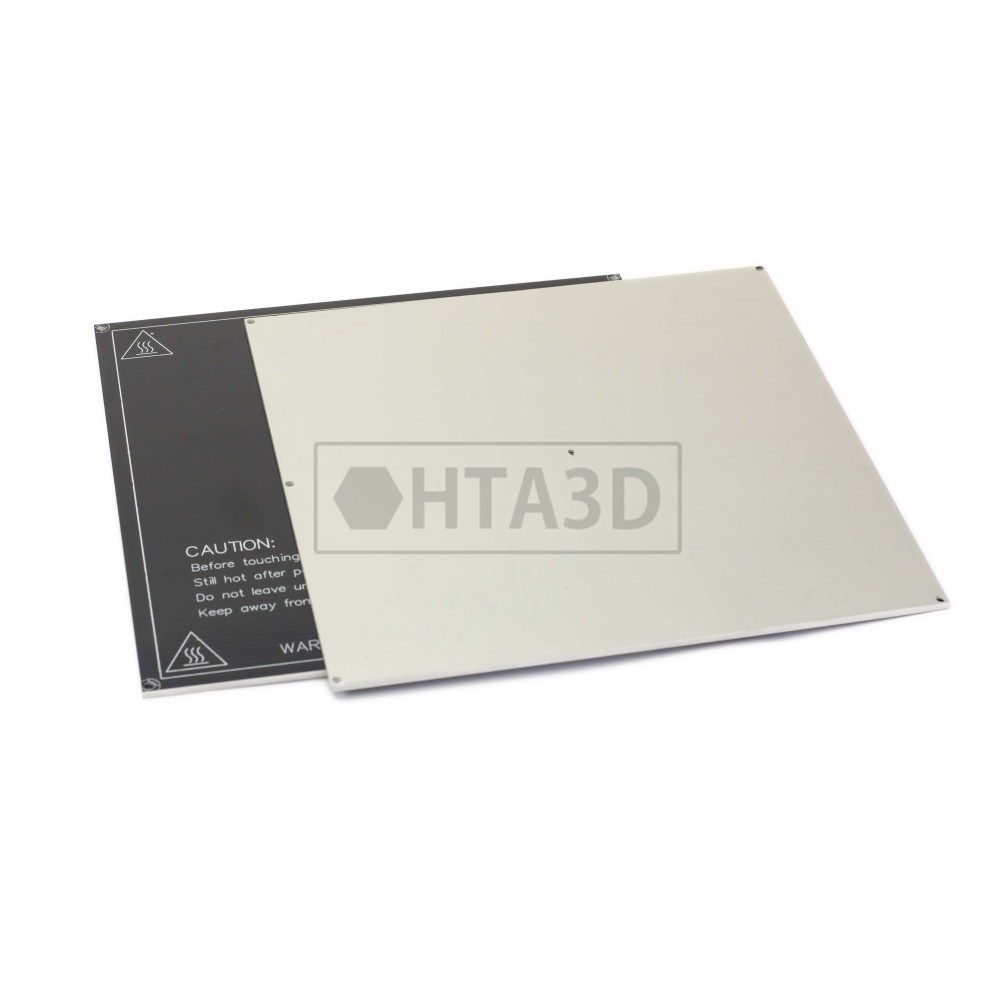
Magnetic:
They come ready to be used in conjunction with the magnetized build platforms as it contains magnets on the bottom of the bed. Only to be used at 24V, they have high power, so they heat up very quickly. The PCB is on top, so it has highly optimized heating of the printing surface. They are quite rigid and flat although they cannot be used without a printing surface. In addition, it is usually sold with the cables already soldered and with the connections prepared.
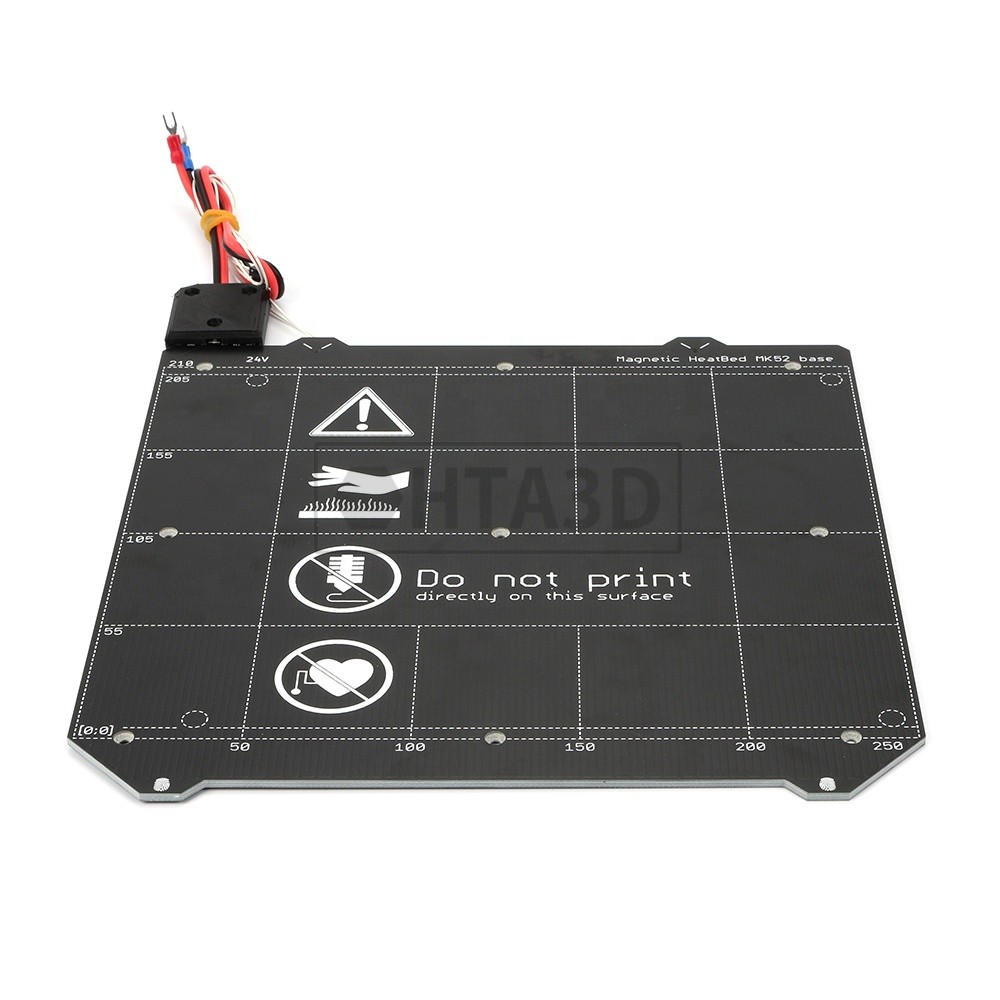
Superficies de Impresión:
Borosilicate tempered glass
It has been the most used option for years giving very good results. It is used with clamps to hold the heated bed and lacquer or adhesive spray to ensure adherence of the piece to it.
When the piece is cooled after printing, they can be detached easily, although still hot is not advisable. Lacquer can leave residues on the surface, so it is advisable to wash it from time to time with soap and water. It is also inexpensive and easily replaced. It is common to have several to alternate without having to wait for it to cool.
As the glass is polished, it will leave a glossy finish on the printed parts. However, if the glass has scratches, they will also appear on the piece.
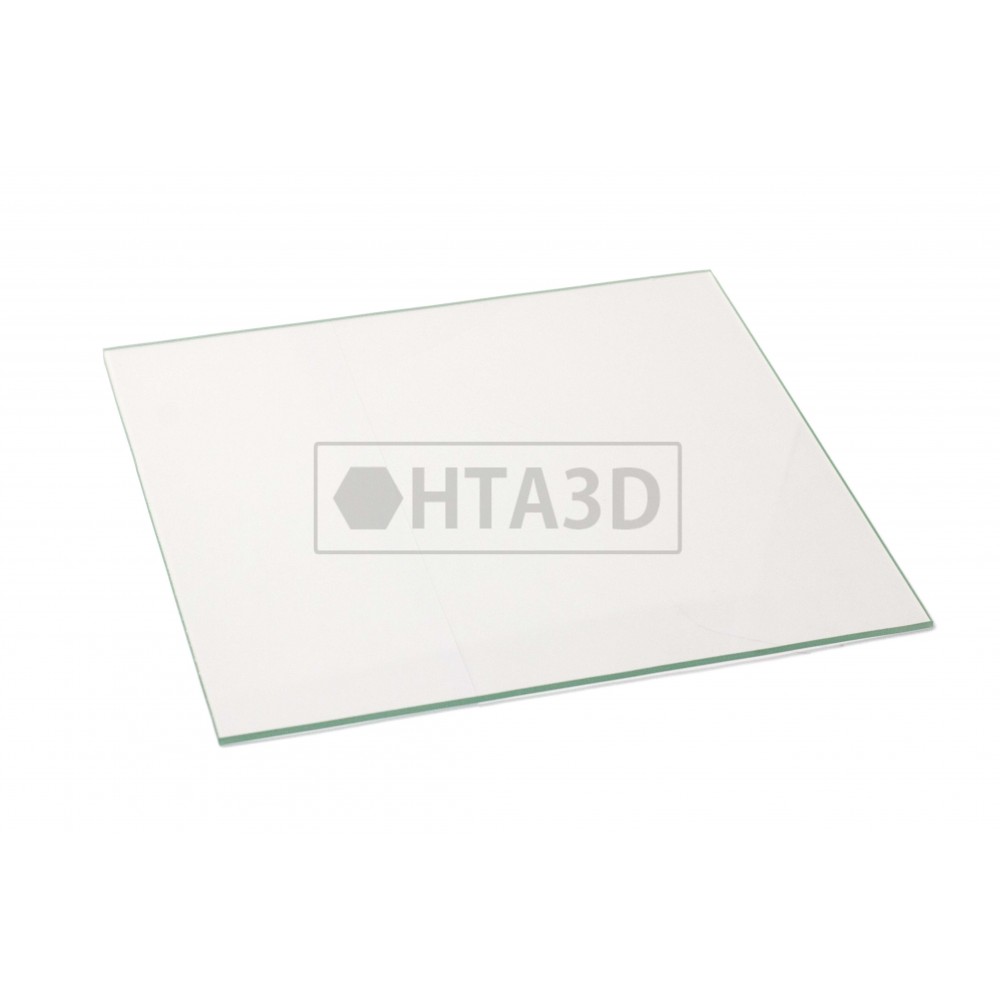
MK3 aluminum heated bed without additional surface:
In this case, one side of the heated bed is used as the printing surface. It is printed directly on the aluminum (using lacquer). Some users use masking tape on it, since it has a great adhesion capacity, although it does not eliminate the need for lacquer it can reduce it.
As it has a flat surface, it does not require the flatness of a glass. However, we have not recommended this option on the MK2b + glass, since with use the aluminum is very likely to end up being scratched and damaged, and it is preferable that this damage is assumed by the glass, which is more easily interchangeable.
The use of the aluminum MK3 with glass is widely used, the only problem is that we add weight on the Y axis, which is not ideal for printers that have it in motion.
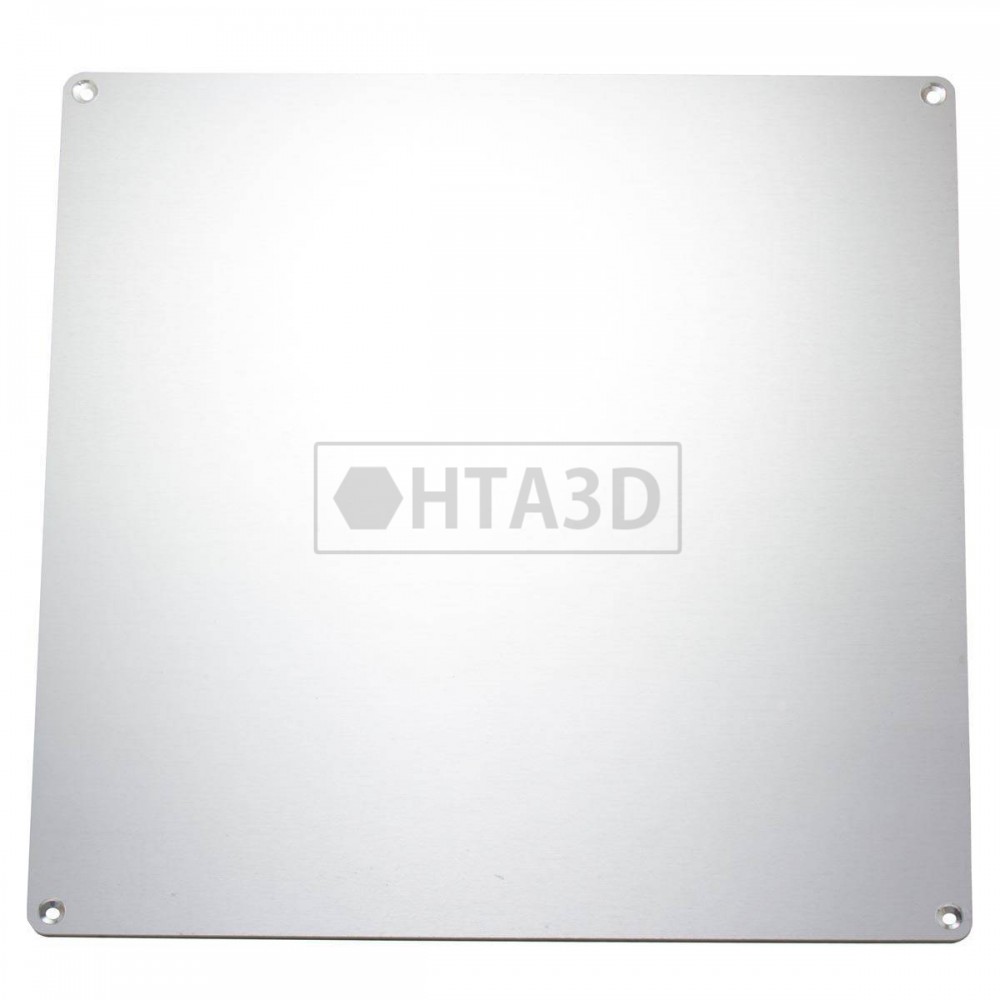
Microporous coated hot bed glass Ultrabase type:
Adheres to the heated bed easily since one of its sides is adhesive, without the need for clamps. It should only be used on the aluminum bases, the PCBs are not rigid enough to use it together with this type of glass.
The part is printed on the microporous coating, which increases the adhesion with the printed part relative to the tempered borosilicate glass. In theory, you don't need spray, but minimal use of spray can help. One of its advantages is its super flatness and uniform heating. It will leave the surface in contact with the printed part in the same finish as its surface.
It is easily cleaned using water or alcohol.
As a disadvantage, if it is damaged, it cannot be repaired, we will have to replace it completely and removing the glass can be a complicated task.
We have it available in size 310x310mm.
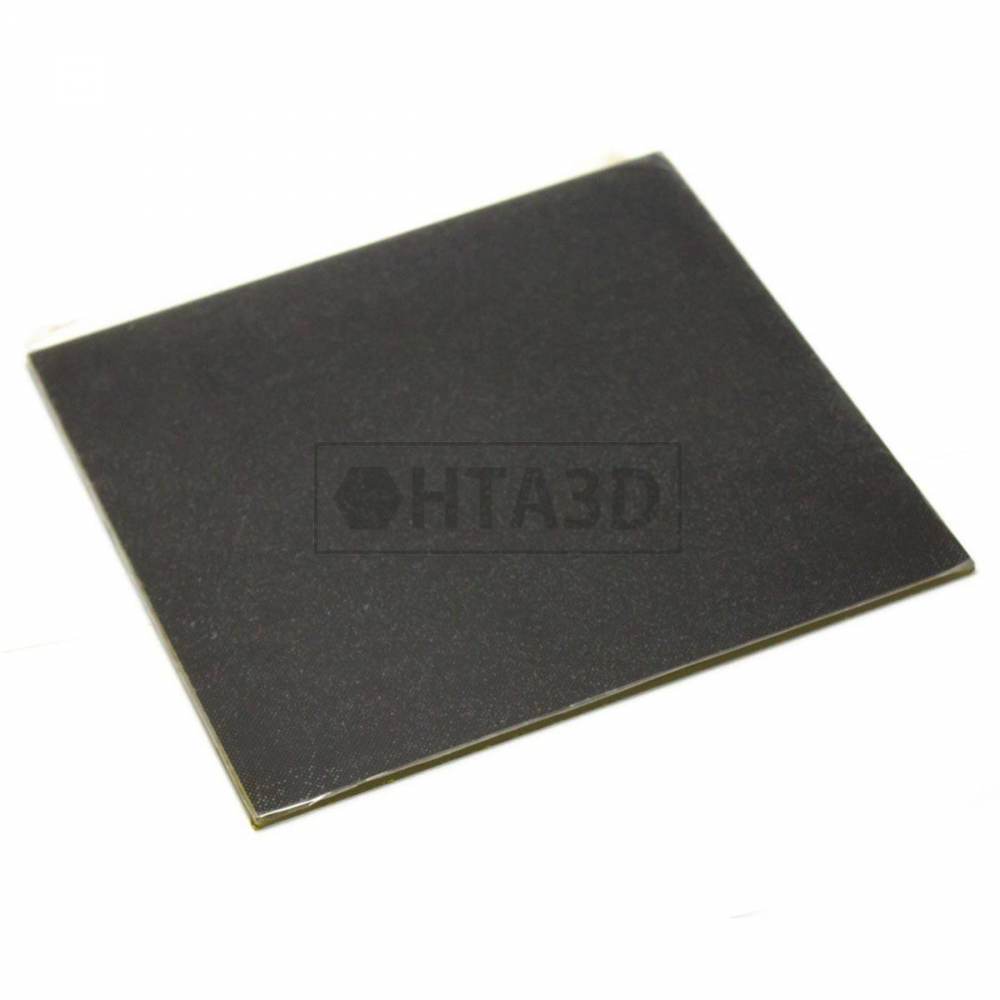
Magnetic printing bases:
They have recently become the most used option in 3D printing, and it is thanks to the comfort of its use. They can be used on magnetic hot beds or on aluminum beds with adhesive magnets.
When the print is finished we can separate it and flex it, so that the pieces come off very easily.
There are several options for this type of base:
- Metallic Sheet y PEI powder coated flexible metal sheet:
On magnetized or aluminum beds with adhesive magnets. Made of hardened spring steel, it recovers its shape after bending, it is a simple and comfortable option. PEI is strongly adhered to sheet metal, but if damaged by poor calibration or use, it cannot be repaired, but can be used on both sides. We may need to raise the base temperature a few degrees in the first coat to ensure strong adhesion.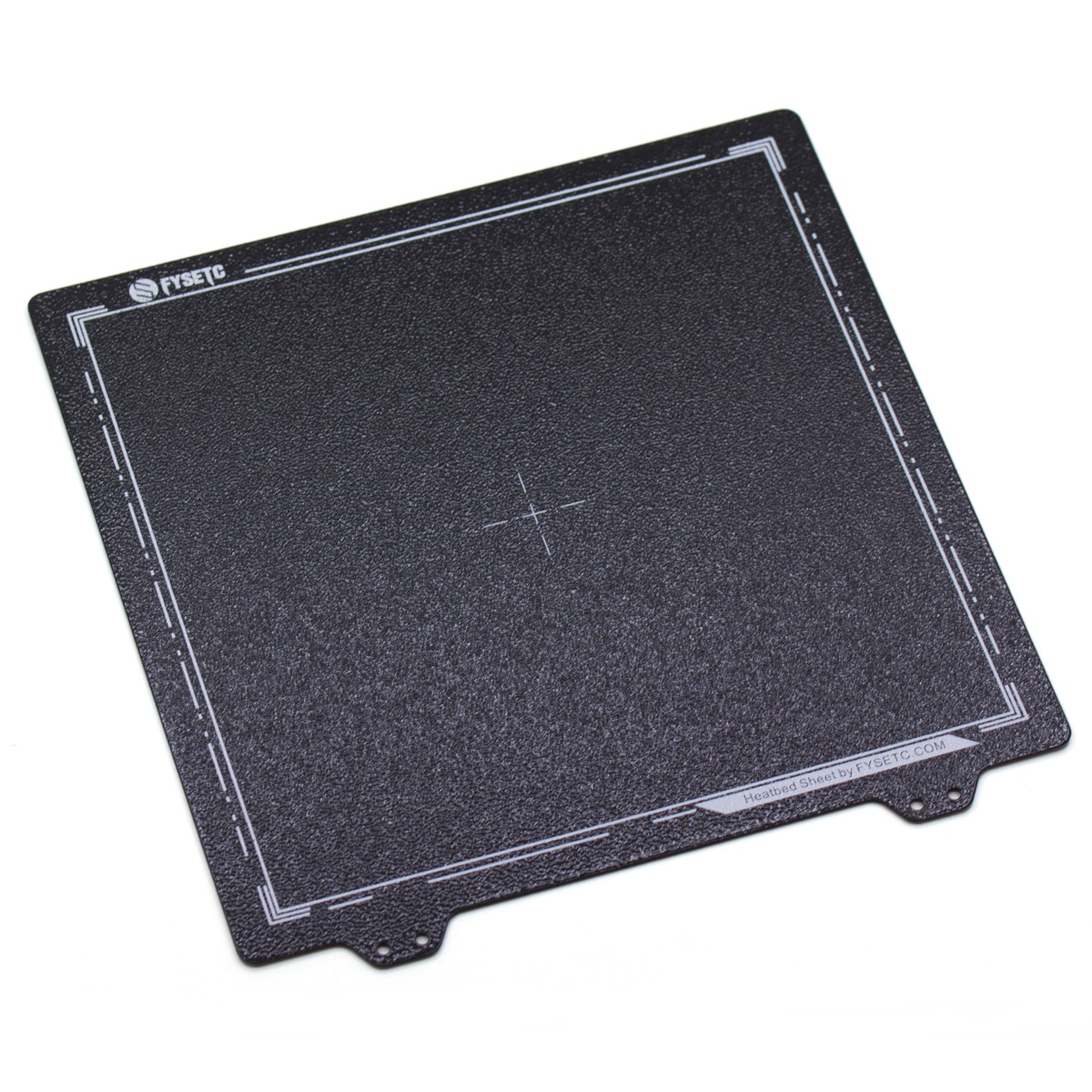
- Adhesive magnet + Metallic Sheet + Printing surface BuildTak style:
This combination also adds the option of tailoring it to your heated bed.
It is designed with a special material in which the printed parts adhere very strongly, and its finely rough texture helps. Once the printing is finished, the piece is removed without leaving any residue or marks. No lacquer or adhesives are needed for use. In some cases, printing PETG can adhere too much and make it difficult to remove it, in this case, using a little lacquer we will ensure that it does not stick so much.
Printed parts will have a slightly rough finish.
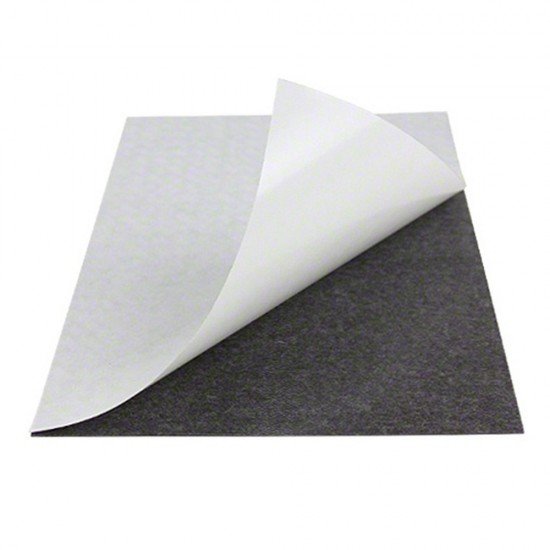
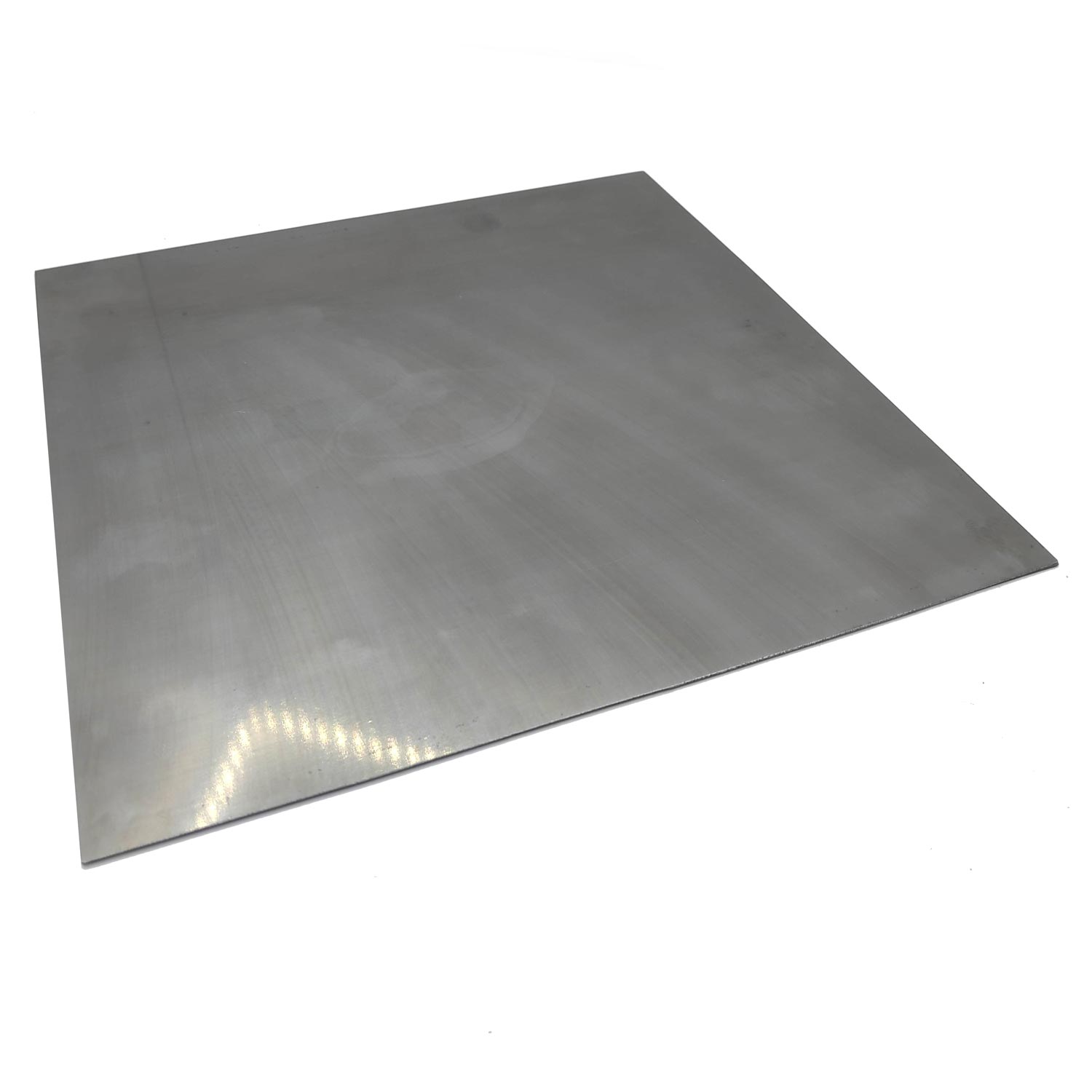
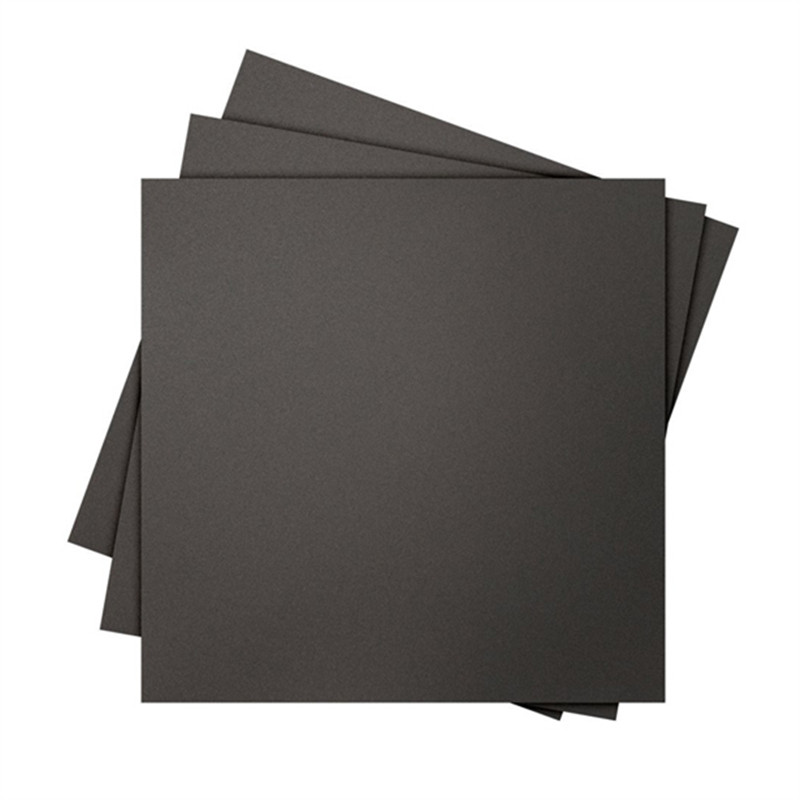
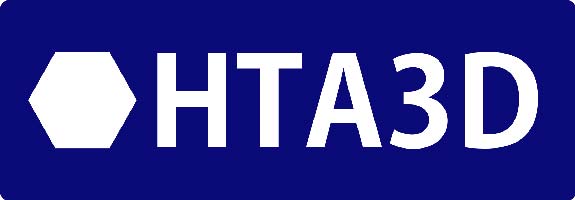
5 Comment(s)
Hola. Quisiera saber si la opcion "https://www.hta3d.com/es/packs-de-productos/set-for-flexible-magnetic-base-composed-of-adhesive-magnet-tempering-steel-and-buildtak-type-coating" la podria aplicar directamente sobre una base de aluminio hecha por mi sobre una mk2 o seria mejor poner entre la base de aluminio y la lamina magnetica un cristal de borosilicato. La placa de aluminio se ve bastante plana pero como hablamos de tolerancias tan pequeñas, no se si lo es lo suficiente para montarla directamente. Decir que para el nivelado tengo el 3dtouch. Gracias.
Si, se puede poner directamente sobre una base de aluminio tipo MK3, si es "casera" simplemente has de asegurarte de que el calor se reparte bien y la cama está recta. Si nivelas con 3Dtouch compensarás cualquier desnivel. De cualquier forma las MK3 son muy económicas, si ves que la MK2 que tienes no funciona del todo bien, puedes plantearte actualizarla.
Buenas noches, tengo una impresora de 400x400 con una cama caliente de aluminio y silicona. Estoy valorando el ponerle una base magnética pero no tengo claro qué es lo que tengo que comprar... ¿Cómo se sujeta la base? Entiendo que llevará algún tipo de cinta de doble cara o algo así...
Hola Juande, efectivamente, la lámina magnética tiene un adhesivo preaplicado, es tan sencillo como poner un protector a un móvil. Este es el pack que te interesa, seleccionando las opciones para 400x400:https://www.hta3d.com/es/packs-de-productos/set-for-flexible-magnetic-base-composed-of-adhesive-magnet-tempering-steel-and-buildtak-type-coating
Hola, quisiera me aclares una duda. Configuro la Cama Caliente a 50 grados, al mediar la mpresión y al final al de ella la temperatura ha bajado a casi la mitad. Esta no se debería mantener constante como al inicio de la impresion? Gracias
Así es, lo recomendable es mantener la temperatura constante durante toda la impresión, para evitar que se despegue la pieza principalmente. La cama se suele enfriar al terminar la impresión, una vez fría se despega la pieza.
Thanks for sharing such an informative article. I really appreciate it.
I'm writing stuff on cats' basic needs and utilities: like the best brushes for long-haired ragdoll cats or the best food and treats, and also about litter and cat toys. You can read my blog post at https://gopetco.com/
Thank you for sharing this informative post. It's evident that you have a deep love for Ragdoll cats. I can't wait to start my journey to find the perfect purebred Ragdoll kitten.
Leave a Comment